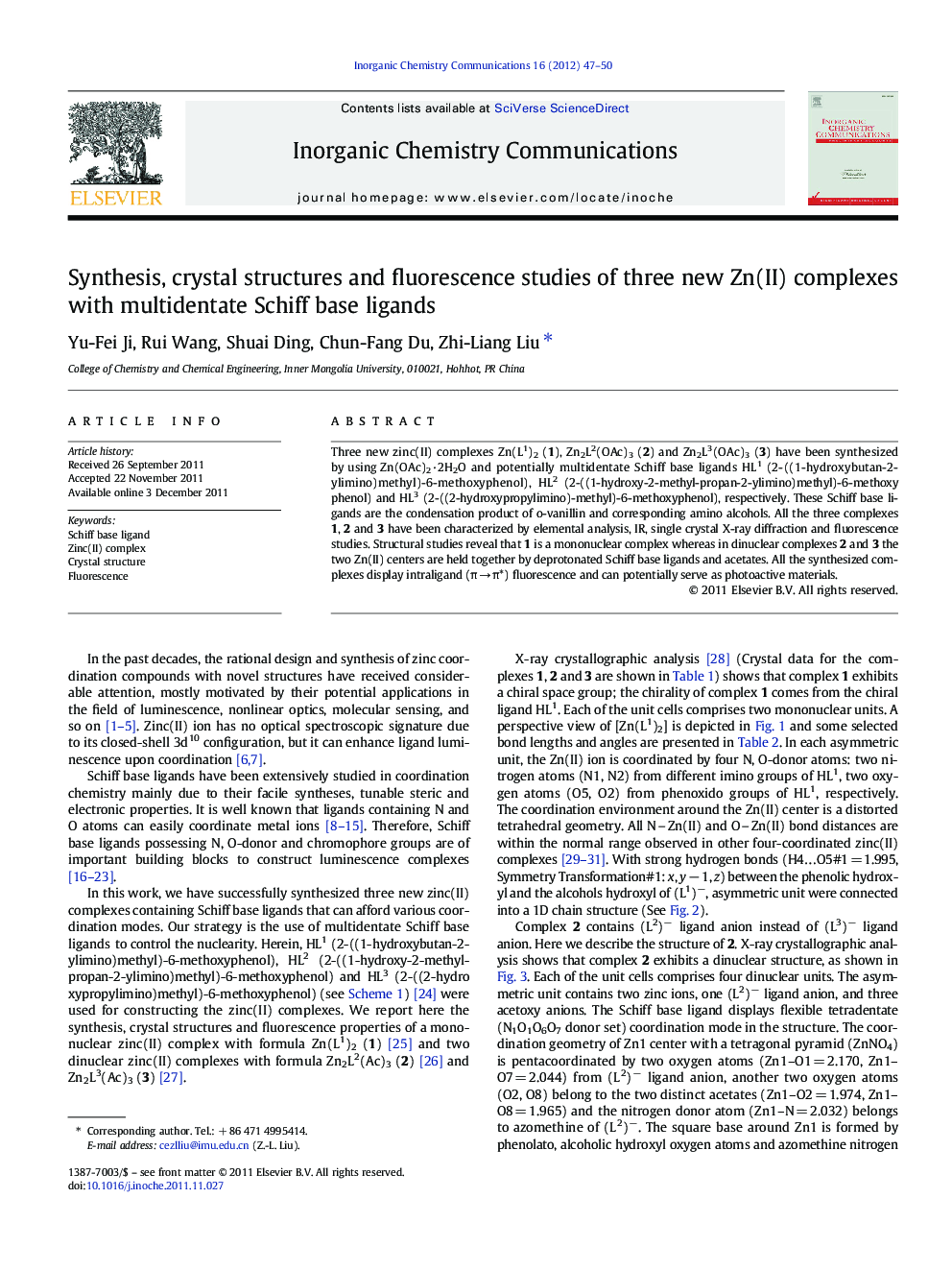| Article ID | Journal | Published Year | Pages | File Type |
|---|---|---|---|---|
| 1304260 | Inorganic Chemistry Communications | 2012 | 4 Pages |
Three new zinc(II) complexes Zn(L1)2 (1), Zn2L2(OAc)3 (2) and Zn2L3(OAc)3 (3) have been synthesized by using Zn(OAc)2·2H2O and potentially multidentate Schiff base ligands HL1 (2-((1-hydroxybutan-2-ylimino)methyl)-6-methoxyphenol), HL2 (2-((1-hydroxy-2-methyl-propan-2-ylimino)methyl)-6-methoxyphenol) and HL3 (2-((2-hydroxypropylimino)-methyl)-6-methoxyphenol), respectively. These Schiff base ligands are the condensation product of o-vanillin and corresponding amino alcohols. All the three complexes 1, 2 and 3 have been characterized by elemental analysis, IR, single crystal X-ray diffraction and fluorescence studies. Structural studies reveal that 1 is a mononuclear complex whereas in dinuclear complexes 2 and 3 the two Zn(II) centers are held together by deprotonated Schiff base ligands and acetates. All the synthesized complexes display intraligand (π → π*) fluorescence and can potentially serve as photoactive materials.
Graphical abstractThree blue luminescent zinc(II) complexes have been synthesized by using Zn(OAc)2·2H2O and potentially multidentate Schiff base ligands. The structures of all the three complexes 1, 2 and 3 have been determined by single crystal X-ray diffraction.Figure optionsDownload full-size imageDownload as PowerPoint slideHighlights► Three zinc(II) complexes with blue luminescent which display intraligand (π → π*) fluorescence has been synthesized. ► The fluorescence intensity is greatly enhanced by the coordination of (ZnII) with Schiff base ligands. ► The supramolecular interactions increase the conformational rigidity of chromophore groups and thus the emission intensity is much stonger.
